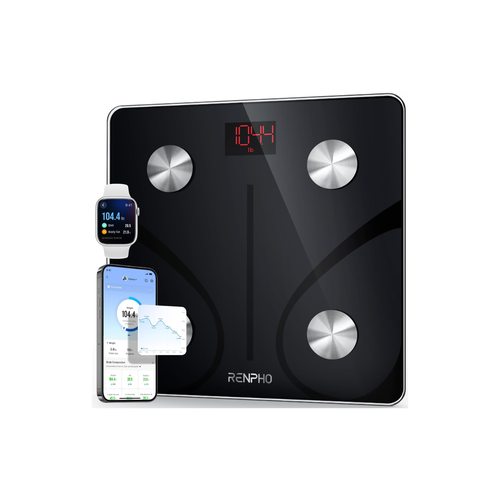Gut Check: Prebiotics and Probiotics Explained

Stay tuned to our latest news
Have you ever experienced an upset stomach or bloating? It's not fun, and it can affect your overall health and well-being. The good news is that there are ways to help prevent these issues, one of which is by consuming prebiotics and probiotics. These terms are often used interchangeably, but they actually differ. So, what are prebiotics and probiotics, and why does it matter to human health? Let's find out.
What are Prebiotics?

Prebiotics are non-digestible fibers that are found in certain foods. Meaning, when you eat foods that are rich in prebiotics, they reach through your gastrointestinal tract intact since your body can’t digest them.
The good thing is these fibers serve as food for the beneficial bacteria living in your gut. When the good bacteria feed on prebiotics, they grow and multiply, helping to maintain a healthy balance of gut bacteria, also known as microbiome diversity, as reported by the University of Michigan School of Public Health.
However, not all types of fiber are prebiotics, so it's vital to choose foods that are specifically high in prebiotic fiber. By doing so, you can help support the growth of good bacteria in your digestive tract and promote gut health.
The Dietary Guidelines for Americans recommends eating a healthy diet that's rich in prebiotic foods to help keep your gut bacteria healthy and thriving. And when your gut bacteria are happy, you're more likely to experience better digestion, stronger immunity, and improved overall health.
Some examples of foods that contain prebiotics include:
• Chicory root
• Jerusalem artichokes
• Garlic
• Onions
• Leeks
• Asparagus
• Bananas
• Apples
• Oats
What are Probiotics?

While prebiotics are food for the good bacteria in our gut, probiotics are the good bacteria themselves. Think of them as the little workers in your gut, making sure everything is working as it should.
Why are these bacteria so important? Well, your gut is home to trillions of bacteria, both good and bad. Digestion issues such as bloating, constipation, and diarrhea may be caused by an imbalance between good and bad gut bacteria, research shows.
Probiotic foods work by helping to balance the good and bad bacteria in your gut, which can improve your digestion, immune function, brain health, and even your skin health, says Registered Dietitian Megan Hilbert.
Lactobacillus and Bifidobacterium are two of the most common probiotic strains, according to the National Center for Complementary and Integrative Health. They are beneficial microorganisms that are naturally found in your body and in certain foods like:
• Yogurt
• Kefir
• Kimchi
• Sauerkraut
• Kombucha
• Miso
• Tempeh
How Does Food Affect the Gut Microbiome?

Think of your gut microbiome as a bustling city, filled with many different types of inhabitants such as microbes and bacteria that play different roles. Just like how a city needs certain resources to thrive, the gut microbiome needs certain nutrients to stay healthy.
A study revealed that food passes through our intestinal tract, where the nutrients can either be used by our bodies or the bacteria in our guts. Some of these nutrients are prebiotics, and they act like food for the beneficial bacteria in our gut. This helps these bacteria to thrive, just like how a garden needs fertilizer to help plants grow.
In addition to prebiotics, we can also consume probiotics, which are live bacteria that are often found in yogurt or fermented foods like sauerkraut. Based on the report of Harvard Medical School, probiotics are like friendly reinforcements, helping to balance out the population of bacteria in our gut microbiome.
Overall, eating a balanced diet with lots of fiber-rich foods, like fruits, vegetables, and whole grains, can help to promote a healthy gut microbiome, says Registered Dietitian Nutritionist Kristin Kirkpatrick. Just like how we need an array of foods to stay healthy, our gut microbiome needs a variety of nutrients to stay healthy too.
How Do Prebiotics and Probiotics Work?
Prebiotics and probiotics work together to maintain a balanced microbiome. Prebiotics provide the food that healthy bacteria need to thrive, while probiotics help to replenish and maintain the population of friendly bacteria in our gut, according to the report of the University of North Dakota.
When we consume prebiotics, they pass through the digestive system mostly unchanged until they reach the colon. There, they're fermented by the microorganisms like bacteria, which produce short-chain fatty acids (SCFAs) as a byproduct. SCFAs are vital for the colon. They give energy to colon cells and control the colon's pH, creating an acidic environment that repels harmful bacteria. This is critical to preventing gastrointestinal diseases, as per the University of Michigan School of Public Health.
Probiotics, on the other hand, can survive the harsh environment of the stomach and make it to the small intestine, where they can begin to colonize and establish themselves, says Registered Dietitian Theresa Gentile. Probiotics can help to maintain the microbiome balance by competing with harmful bacteria for resources and space, producing antimicrobial compounds, thus stimulating the immune system.
So, to sum it up: probiotics are the good bacteria in your gut, while prebiotics are the food that those bacteria need to stay healthy. Without adequate amounts of prebiotics, the good bacteria in your gut can't do their job properly.
Takeaway
Prebiotics and probiotics are two important components of a healthy gut microbiome. While prebiotics provide the food that the good bacteria need to thrive, probiotics help to maintain and replenish the population of good bacteria in our gut. Together, prebiotics and probiotics can help to improve digestive health, boost our immune system, and even have an impact on our mental health. By incorporating prebiotic and probiotic-rich foods into our diet, we can support our gut health and improve our overall well-being.
Renpho Health Tips
-

Nutrition Tips for Starting 2023 Off Right
January 9, 2023
Read more >
-

The Good Bacteria: A Beginner’s Guide to Gut Health
February 6, 2023
Read more >
-

7 Good Habits to Improve Your Gut Health
February 20, 2023
Read more >
-

Uncovering the Secrets of Digestion and Hydration for Longevity
March 20, 2023
Read more >
-

Elevate Your Mood: Healthy Snacks for a Busy Work Schedule
April 10, 2023
Read more >






